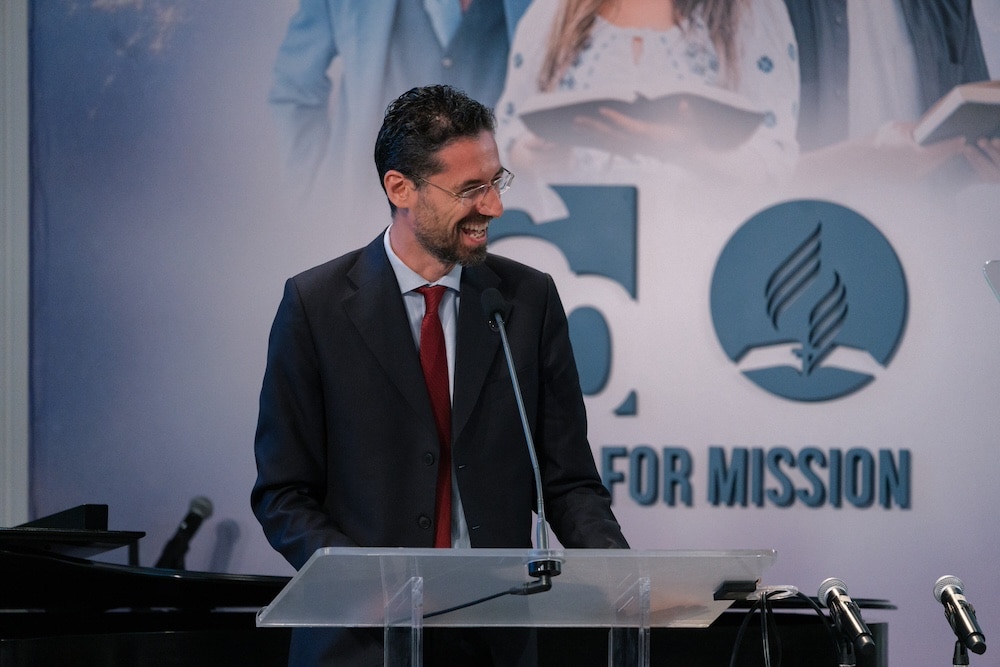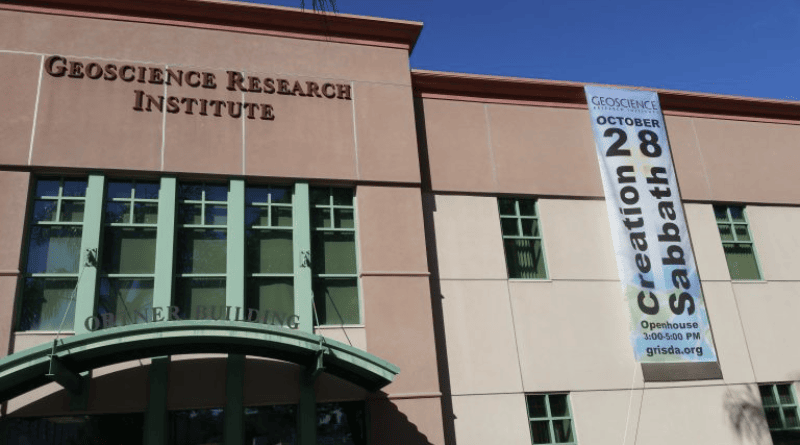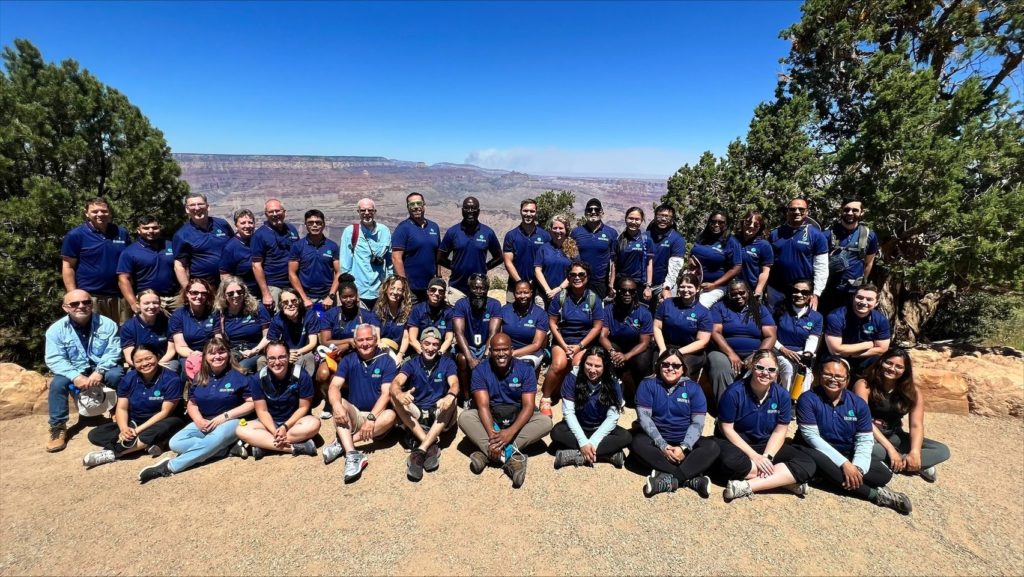
The Geoscience Research Institute (GRI) report at the 2023 Annual Council of the Seventh-day Adventist Church reminded hundreds of church leaders about the impact of the General Conference–funded organization for Christians who still believe in biblical creation.
On October 8, GRI director Ronny Nalin shared the institute’s activities and plans, highlighting some of the theological implications of the work it accomplishes.
The mission statement of GRI is “to explore the natural world, seeking to develop and share an understanding of nature consistent with the biblical teaching as expressed in the church’s statement of fundamental belief on creation,” Nalin read. He added, “This is the compass that leads our activity and planning.”
Nalin explained that the work of GRI includes two functions: exploring and developing an understanding, and sharing that understanding with others. In the following minutes, he detailed how GRI accomplishes those two functions.
Exploring and Developing an Understanding
GRI accomplishes this mission through original scientific research on topics that are relevant to the biblical view of origins, Nalin reminded church leaders. “We accomplish that mission by networking, mentoring, and with scholarly discussion of scientific issues,” Nalin said. Also, it is by “producing educational resources, teaching classes, and organizing educational programs for teachers, pastors, university students, and the interested public.”
Nalin added that GRI serves as a consultive resource for the church regarding its understanding of the relationship of creation and science.
Currently, GRI includes four full-time scientists engaged in original research in areas of great significance for earth history and its relation to the biblical account of origins. “Each one of them has been prepared by God for a very special mission,” Nalin said. “They dedicate their lives, their training, and their skills to bring glory to God through research and investigation.”
Nalin explained further that all GRI scientists are engaged in original research in areas of great significance for earth history and its relationship to the biblical account of origins. Some of these areas are geochronology (radiometric dating); igneous activity (volcanoes) in space and time; the fossil record (especially the conditions for the formation of dinosaur footprints); processes that led to widespread rock formations and deposits; the source of genetic variability in endemic island species; and the process of rapid speciation.
“This work is often field based, so it involves some adventure in disparate locations around the globe,” Nalin shared.
The results of the GRI scientists’ research projects are published in peer-reviewed scientific journals, something that, according to Nalin, “demonstrates the relevance for the larger scientific community of our studies, the quality of our work, and also our commitment as a team to engage within the scientific community, because academia is also a place where we need people chosen for mission.”
This is not a standalone enterprise, Nalin assured EXCOM members. “We have an extensive network of mentorees, especially young students and scientists that are passionate about science and learning about the natural world but are also committed to God and His Word,” he said.



Sharing the Adventist Understanding
One of the ways the GRI likes to share is through field conferences, including “activities where GRI scientists can be in the field, look at the rocks, study the wonderful vestiges of earth history and God’s creative activity in human history.”
Recent conferences included one at Babcock University in Nigeria in July, attended by 1,200 Adventist educators from 22 countries. Another was an early August trip with science teachers from across the North American Division (NAD). They were, in Nalin’s words, “fifty wonderful teachers, so committed and dedicated,” who spent time in several locations in Arizona, United States, including the Grand Canyon. An upcoming field trip with educators will take GRI scientists to Tanzania to support science teachers in the East-Central Africa Division, he reported. “We will grow together and possibly have a ripple effect in the whole division,” he said.
Recently, GRI launched a graduate certificate in faith and science at the Adventist International Institute of Advanced Studies (AIIAS) in the Philippines. “Now we have the ability to provide higher education in three different levels,” Nalin reported, “thanks to this certificate at AIIAS, a master’s at Sagunto [in Spain], and master and doctorate studies at Loma Linda University [in California, U.S.].”
Nalin also celebrated partnerships that allow GRI scientists to share what they do through the written word. GRI is a regular contributor to Adventist Review and publishes books through Andrews University Press. It also works closely with the NAD Education Department. Together, they developed a biology curriculum book for primary and secondary school students. “It is enquiry based and also affirms the beauty of the Creator God,” he said.
Audio-visual resources are another method GRI uses to share the Adventist understanding of origins. They include, for instance, the video series Seeking Understanding,which profiles the life and journey of scientists and scholars who are also people of faith.
Nalin reminded church leaders about the upcoming Creation Sabbath on October 28, a special day on which local churches around the world focus on activities that highlight the work of God as the Creator. “That’s your chance, that’s your Sabbath,” he said. “Plan to join this global celebration.”
A Meaningful Work
Nalin acknowledged that GRI’s impact would be minimal but for its branch offices around the world. Currently, the organization has four branch offices in four church divisions, along with 11 resource centers. Soon, more divisions will open branch offices, he said. And even those divisions without a branch office or resource center do have GRI representatives as liaisons to the institute, Nalin said.
As he closed his report, Nalin reminded EXCOM members of the connection between the work GRI does and what the Adventist Church has been called to do.
“The reality is that in this very moment, there are myriads of angels, magnificent celestial beings, that are giving glory to God because He is the Creator,” Nalin said. “We exist, and we are here — you and I — because God created the universe, because God created this world and fashioned it for us to inhabit it. We are here today because God willed us. We are here today because He sustains our being.”
Nalin said that if we understand that, we realize that “that is what we have been given as a church; that is the gospel we must share. So, let’s go tell other people, ‘You are special! You are loved! Somebody willed you; Somebody designed you. Give Him your heart, and He will lead you.’ That’s the special message we must share,” he said.